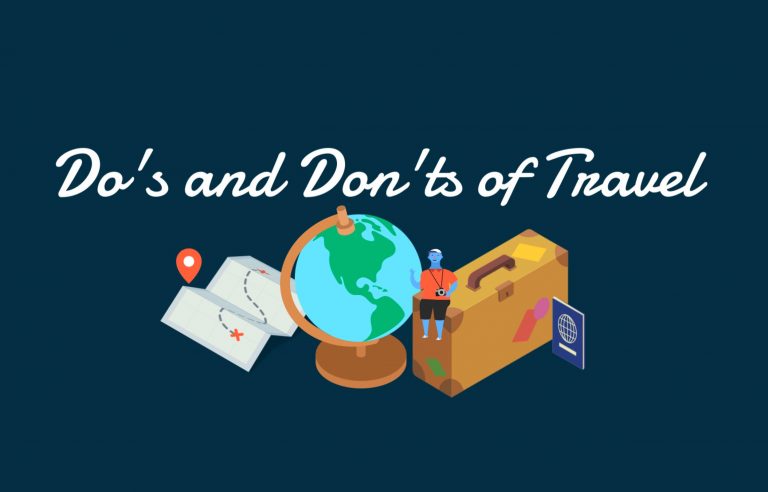Zombie Bunny is Reader-supported and may earn an affiliate commission through links on our site.

Unleash Your Freedom: The Ultimate Guide to Digital Nomadism
Unearth the secrets to #DigitalNomadism and embrace a life of freedom and remote work. Dive into our ultimate guide and join the community of #Nomads #RemoteWork
Discover the limitless potential of digital nomadism and how to successfully blend work and travel in our comprehensive guide. We delve into every aspect of this liberating lifestyle, from harnessing the power of technology, managing time and finances, to navigating different cultures and building a global network. Whether you’re a freelancer, entrepreneur, or remote employee, this guide provides practical advice on how to live and work on your own terms, unrestricted by physical locations or time zones. Ready to unleash your freedom and join the growing tribe of digital nomads? Let’s get started!
Introduction: Embrace the Freedom of Digital Nomadism

© Copyright , ZombieBunny.Org
Understanding digital nomadism
Digital nomadism, a term that’s gaining traction in today’s hyper-connected era, refers to a lifestyle that blends work with travel. It involves individuals leveraging technology to perform their jobs from anywhere in the world, freeing them from the traditional workspace and enabling them to explore new cultures, experiences, and landscapes while maintaining a steady income.
This new trend of digital nomadism is not just about working from exotic locations; it’s about embracing a way of life that values freedom, flexibility, and personal growth. It’s about breaking free from the confines of a 9-to-5 job, transcending geographical boundaries, and exploring the infinite possibilities that technology and connectivity offer. In essence, digital nomadism is a manifestation of the limitless potential of remote work — a concept that has gained significant momentum in recent years.
Digital nomads are individuals who have tapped into this potential, utilizing their skills and the power of the internet to create a balance between professional commitments and personal aspirations. They are freelancers, entrepreneurs, and employees who have chosen to live their lives on their own terms, unrestricted by physical locations or time zones. As we delve deeper into the world of digital nomadism in this guide, we’ll explore how you too can unleash your freedom and join the growing tribe of digital nomads.
The desire for freedom and independence
The allure of digital nomadism often stems from a deep-seated desire for freedom and independence, a yearning to break away from the conventional and explore the unconventional. This yearning goes beyond just wanting to escape the monotony of a 9-to-5 job. It embodies the aspiration to live life on one’s own terms, to set one’s own hours, to choose one’s own workspace, and to decide one’s own pace of life.
Being a digital nomad offers the thrilling opportunity to embrace constant change, to wake up in a new city every week, and to immerse oneself fully in diverse cultures. It grants the freedom to work from a beachside cafe in Bali, a bustling city square in Rome, or a tranquil park in Tokyo. This level of independence and mobility, enabled by digital nomadism, is an enticing proposition for those who crave a non-traditional lifestyle.
Yet, it’s not just about the physical freedom to move, but also the mental freedom to grow. As a digital nomad, your experiences are not limited by office walls or dictated by a rigid schedule. Every day presents opportunities for personal growth and self-discovery, making digital nomadism as much a journey of self-exploration as it is a lifestyle choice. As we navigate through this guide, we will shed light on how to harness this freedom and independence, shaping your own unique path in the realm of digital nomadism.
Introduction to the ultimate guide
Welcome to “Unleash Your Freedom: The Ultimate Guide to Digital Nomadism”. This comprehensive guide is designed to provide you with all the information you need to successfully embark on your journey as a digital nomad. It is packed with insights, tips, strategies, and real-life experiences that will help you navigate the unique challenges and embrace the exciting opportunities of this lifestyle.
In this guide, we will delve into what it means to be a digital nomad, the pros and cons of this lifestyle, and the essential steps you need to take to become one. We will explore the tools and strategies you’ll need to master remote work, and how to handle accommodation, transportation, and living costs in different parts of the world. We will discuss how to stay healthy and safe on your travels, how to build a community while on the move, and how to travel responsibly and sustainably.
Each section of this guide is designed to provide you with valuable insights and practical advice, grounded in the experiences of seasoned digital nomads. Whether you’re just toying with the idea of digital nomadism or are ready to take the leap, this guide will serve as your roadmap, leading you towards a future where work and travel coexist harmoniously. So, are you ready to unleash your freedom and embrace the thrilling world of digital nomadism? Let’s get started!
Defining Digital Nomadism: The New Age of Work and Travel
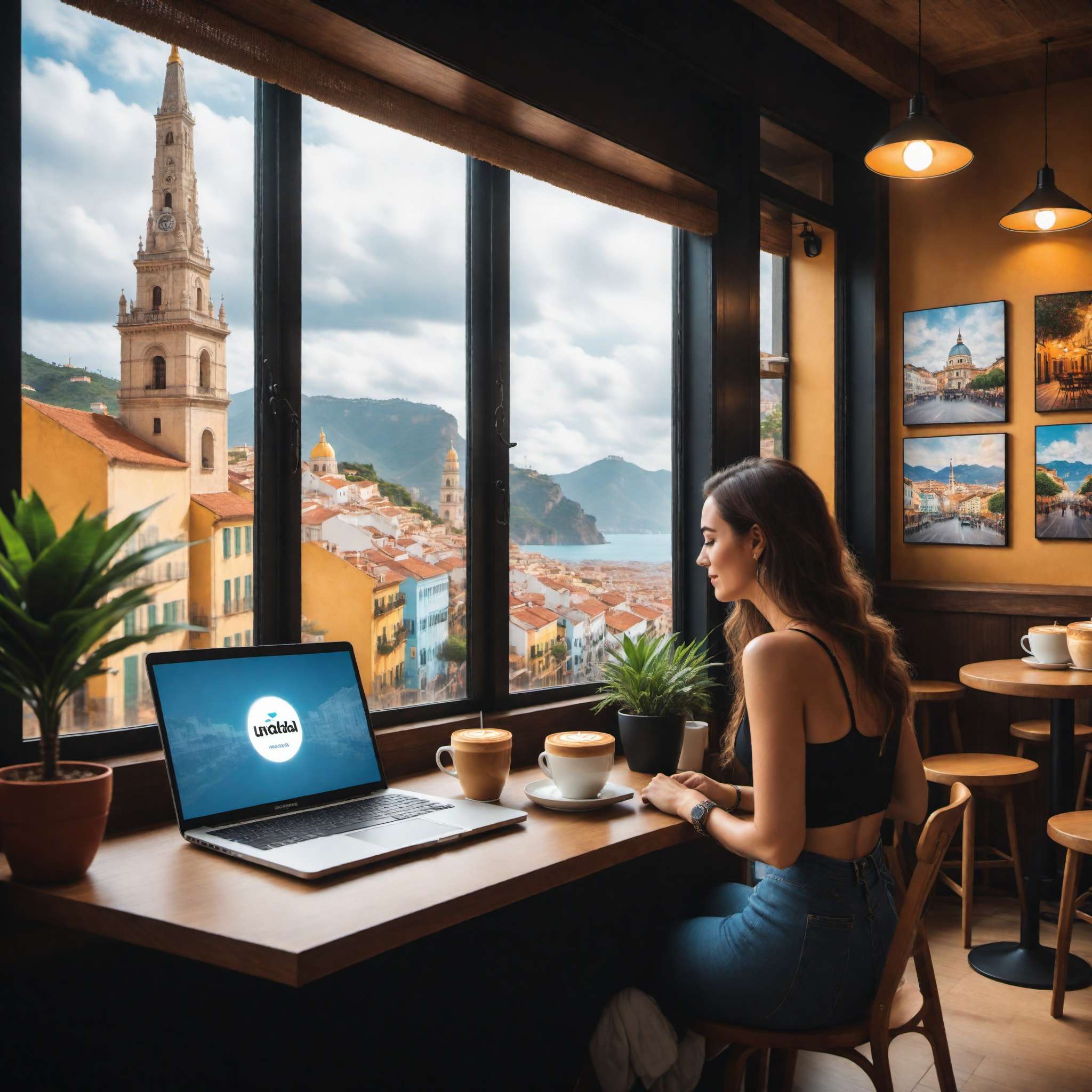
© Copyright , ZombieBunny.Org
Definition of digital nomadism
At its core, digital nomadism is a lifestyle that merges the realms of work and travel, enabled by the advancements in technology and connectivity. Digital nomads are professionals who leverage the power of the internet to work remotely, unbound by geographic constraints, and free to roam the world while earning a living. This lifestyle is not limited to a specific profession; digital nomads can be writers, designers, marketers, developers, consultants, educators, entrepreneurs, and more.
Digital nomads differ from remote workers in their level of mobility. While remote workers are not tied to a physical office, they typically work from a fixed location such as a home office. Digital nomads, on the other hand, are location-independent, meaning they can and do work from anywhere – a cozy cafe in Paris, a tranquil beach in Bali, a bustling coworking space in New York, or even a camper van crossing the Australian outback.
It’s essential to understand that digital nomadism is not just about the work or the travel; it’s about the seamless integration of the two. It’s a lifestyle choice that embraces freedom, flexibility, exploration, and adventure, all while maintaining professional commitments. In this guide, as we delve deeper into the world of digital nomadism, you’ll discover how this lifestyle can allow you to unleash your freedom and redefine the way you work and live.
The evolution of work and travel
The rise of digital nomadism is a testament to the transformational changes in the way we work and travel. This evolution has been fueled by technological advancements, a shift towards remote work, and an increasing desire for work-life balance. The traditional concept of work, once tied to a physical office and a 9-to-5 schedule, is becoming increasingly outdated. The ubiquity of high-speed internet and digital tools has made remote work not only possible but highly productive.
Parallel to this shift in work culture, there has been a significant change in travel patterns. Travel is no longer limited to brief vacations or business trips; it has expanded to encompass long-term, immersive experiences. More and more people are seeking to explore new cultures, learn new languages, and broaden their horizons, all while maintaining their careers.
The intersection of these evolving trends has given rise to the digital nomad lifestyle. As technology continues to advance, the boundaries between work and travel are blurring, and the world is becoming a playground for digital nomads.
The digital nomad lifestyle is not a fleeting trend; it’s a significant step towards a future where work is not confined by geographical boundaries, and travel is not restricted by work commitments. As we navigate through this guide, we will delve further into how the digital nomad lifestyle is reshaping the future of work and travel, offering a unique balance of professional growth and personal exploration.
Why digital nomadism is becoming popular
The rise in popularity of digital nomadism can be attributed to several factors. First and foremost, the advancements in technology have made it easier than ever to work from anywhere in the world. High-speed internet, cloud-based storage, and digital communication platforms have all facilitated the shift towards remote work, making it possible to stay connected and productive regardless of location.
Secondly, there is a growing desire among modern professionals for a better work-life balance. The traditional 9-to-5 schedule often leaves little room for personal pursuits and travel. Digital nomadism offers a solution, allowing individuals to weave work and travel together seamlessly, and to pursue personal interests and adventures alongside their professional goals.
Moreover, the societal perception of work is changing. Success is no longer solely defined by climbing the corporate ladder; it’s increasingly about personal fulfillment, freedom, and flexibility. The digital nomad lifestyle aligns with these values, offering an alternative to the conventional career path.
Lastly, the global pandemic has accelerated the shift towards remote work, causing many to rethink their lifestyle choices. With increasing numbers of companies embracing remote work, many individuals are seizing the opportunity to combine their newfound flexibility with their desire to travel.
As we delve deeper into the world of digital nomadism in this guide, we’ll explore how this lifestyle can offer an enriching blend of professional growth, personal freedom, and adventurous travel.
Pros and Cons: The Reality Behind the Instagram Filters

© Copyright , ZombieBunny.Org
The benefits of digital nomadism
Digital nomadism offers numerous benefits that are attracting more and more people to this lifestyle. The most obvious advantage is the freedom it provides. As a digital nomad, you have the flexibility to work when and where you want. Whether you’re a morning person who loves to start their day with work, or a night owl who prefers to work under the stars, the choice is yours. You can select your workspace, be it a cozy cafe, a quiet library, or a beachfront bungalow.
Another significant benefit is the opportunity for travel and cultural immersion. Digital nomads are not tourists who merely scratch the surface of a place; they live and work in different countries, experiencing the local life, learning new languages, and broadening their horizons. This exposure to diverse cultures, people, and experiences can lead to personal growth, enhanced creativity, and a more open mindset.
Digital nomadism can also contribute to a healthier work-life balance. Without a strict 9-to-5 schedule or a lengthy commute, you have more control over your time. You can take breaks when needed, incorporate physical activity into your day, and have more time for personal pursuits.
Lastly, it allows for increased independence and self-reliance. As a digital nomad, you’re responsible for your work, finances, travel plans, and wellbeing, which can lead to a strong sense of self-confidence and empowerment. As we delve deeper into this guide, we’ll explore how to fully harness these benefits of digital nomadism.
The challenges of digital nomadism
While the benefits of digital nomadism are enticing, it’s crucial to acknowledge the challenges that come with this lifestyle. One of the most significant challenges is maintaining productivity. The allure of new places can often distract from work, and finding a balance between work and exploration can be tricky. Maintaining discipline and a routine, even in changing environments, is critical for success as a digital nomad.
Another challenge is dealing with isolation and loneliness. Being on the move can make it difficult to form long-term relationships, and feelings of homesickness can creep in. Building a network, participating in local events, and staying connected with loved ones back home can help alleviate these feelings.
Digital nomads also face practical challenges like finding reliable Wi-Fi, dealing with different time zones when scheduling meetings, and securing comfortable and quiet places to work. Moreover, navigating visa regulations, managing finances in different currencies, and maintaining good health while constantly changing environments and cuisines can be complex.
Lastly, there’s the challenge of stability. The nomadic lifestyle lacks the security of a fixed home, regular income, and established social support. Preparing for uncertainties, having a financial safety net, and securing remote work contracts are essential to mitigate these risks.
Despite these challenges, many find the rewards of digital nomadism outweigh these hurdles. Throughout this guide, we’ll discuss strategies to overcome these challenges and successfully navigate the digital nomad lifestyle.
Balancing work and travel
Balancing work and travel is one of the fundamental challenges of the digital nomad lifestyle. While the freedom to work from anywhere is liberating, it also requires a high level of discipline and time management skills. Striking the right balance allows you to fully enjoy the perks of being a digital nomad while maintaining your professional commitments.
One strategy is to establish a routine, even if your location keeps changing. Determine your most productive hours, whether it’s early morning or late night, and dedicate that time to focused work. Use digital tools and apps to keep track of tasks, deadlines, and meetings, ensuring that your work stays on track irrespective of your location.
While it can be tempting to explore a new city or relax on a beach all day, remember that you’re not on a perpetual vacation. Prioritize your workload and make a realistic to-do list each day. Once your work commitments are met, you can then explore and soak in your surroundings without any guilt or stress.
However, don’t let work consume your travels entirely. The beauty of being a digital nomad is the freedom to explore, learn, and grow from your travels. Ensuring you carve out time to enjoy these experiences is as essential as meeting work deadlines.
Throughout this guide, we’ll share more tips and strategies on how to maintain this delicate balance between work and travel, allowing you to fully embrace and enjoy the digital nomad lifestyle.
Preparing for the Leap: Essential Steps to Becoming a Digital Nomad
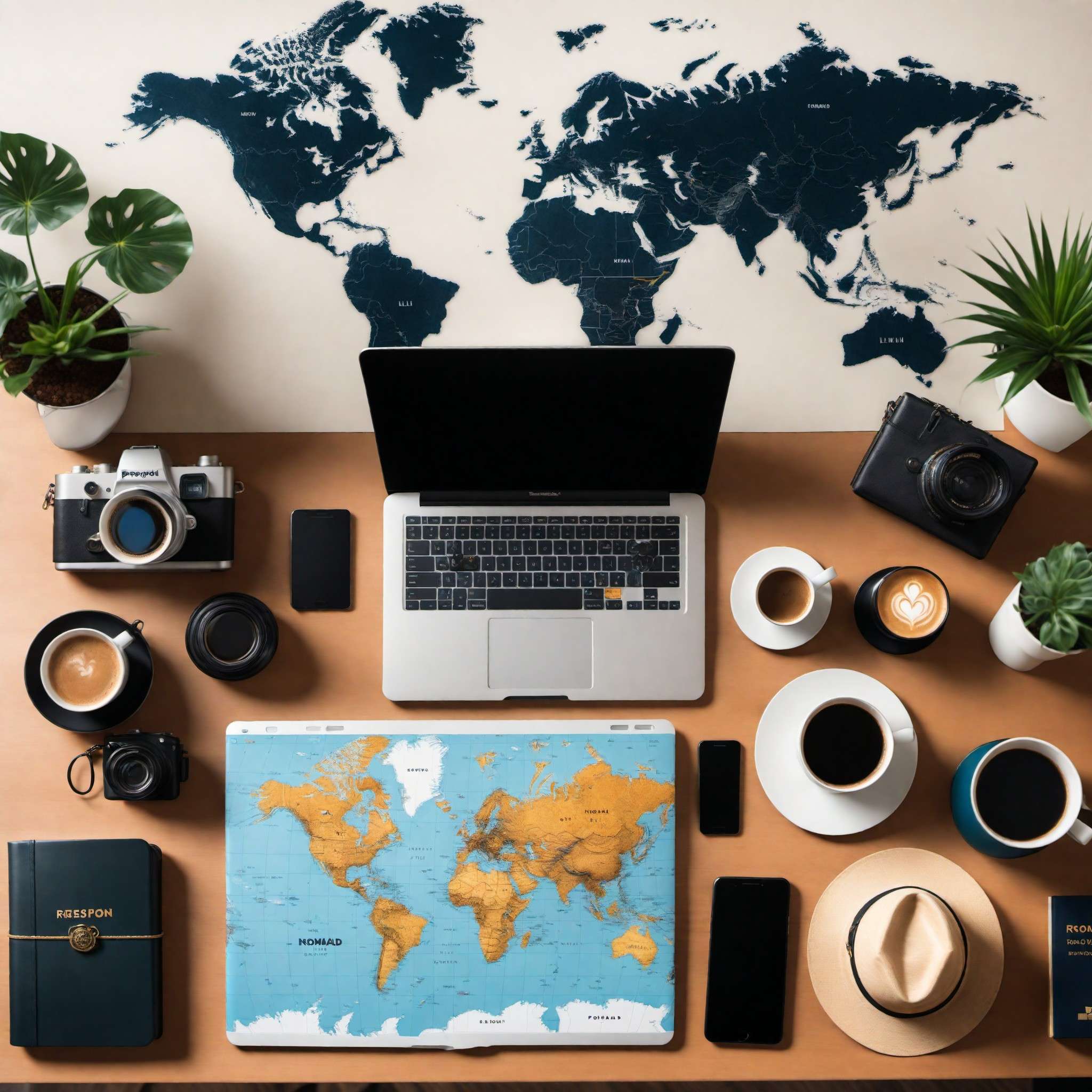
© Copyright , ZombieBunny.Org
Financial planning and budgeting
Embarking on a digital nomad lifestyle requires careful financial planning and budgeting. Regardless of how exciting the prospect of touring the world while working remotely may sound, it’s crucial to ensure you have a solid financial plan in place. This involves understanding your income sources, expenses, and savings, and creating a budget that aligns with your lifestyle goals.
Your income as a digital nomad may come from various sources, including remote work, freelancing, or running an online business. It’s essential to have a clear understanding of your income streams and how reliable they are. Also, it’s wise to have a financial safety net, such as an emergency fund, to cover unexpected expenses or periods of lower income.
Expenses can fluctuate greatly depending on your location and lifestyle. Some cities are more expensive to live in than others, and costs like accommodation, food, travel, and health insurance can add up quickly. Researching the cost of living in your chosen destinations can help you budget more accurately.
Creating a realistic and flexible budget is key to managing your finances successfully as a digital nomad. This includes tracking your spending, adjusting your budget as needed, and ensuring you’re saving for future goals.
Throughout this guide, we will discuss in more detail the financial aspects of digital nomadism, providing you with practical advice and resources to help you plan and manage your finances effectively while enjoying your nomadic lifestyle.
Choosing a location-independent job
Choosing a location-independent job is a critical step in becoming a digital nomad. The beauty of the digital age is that many roles and professions can be performed remotely, thanks to the power of the internet and digital tools. However, it’s crucial to choose a job that not only allows for remote work but also aligns with your skills, interests, and career goals.
Many digital nomads are freelancers, offering services like writing, graphic design, programming, digital marketing, consulting, and more. Others run their own online businesses, managing e-commerce stores or offering online courses. Many companies are also increasingly open to remote work, offering roles in various fields that can be performed from anywhere.
When choosing a location-independent job, consider factors like the demand for your skills, the potential income, the flexibility of the job, and your passion for the work. It’s also important to consider the stability of the job. Freelance work can sometimes be unpredictable, so having a steady client base or a reliable employer can provide more security.
Moreover, you need to be self-motivated and disciplined to succeed in a location-independent job. Without the structure of a traditional office environment, it’s up to you to manage your time, meet your deadlines, and stay productive.
As we delve deeper into this guide, we will provide more insights and resources on how to find and succeed in location-independent jobs, setting the foundation for your digital nomad journey.
Packing essentials for digital nomads
Packing for a digital nomad lifestyle is a blend of choosing the essentials for both work and travel. The key is to pack light but smart, ensuring you have everything you need to work efficiently and enjoy your travels.
Work essentials include your laptop, reliable internet devices (like a portable Wi-Fi router or a local SIM card), and any necessary accessories like headphones, mouse, keyboard, or laptop stand. Keeping your equipment safe is paramount, so consider investing in a sturdy, water-resistant backpack with padded compartments.
For travel, pack clothes suitable for the climates of your chosen destinations, and always have a good pair of comfortable shoes. Remember, you’re not on a short vacation but living on the move, so choose versatile, easy-to-clean, and durable clothing. Also, consider packing a small first-aid kit, a reusable water bottle, travel-sized toiletries, and a compact travel towel.
Other essentials include important documents like your passport, driver’s license, and digital copies of all important documents. It’s also wise to have a list of emergency contacts and relevant health and travel insurance information.
Remember, every digital nomad’s packing list will be unique, depending on personal preferences and the nature of their work. As we continue through this guide, we’ll explore more about the essentials that can make your digital nomad journey smoother and more enjoyable.
Master the Remote Work: Tools and Strategies for Nomadic Success
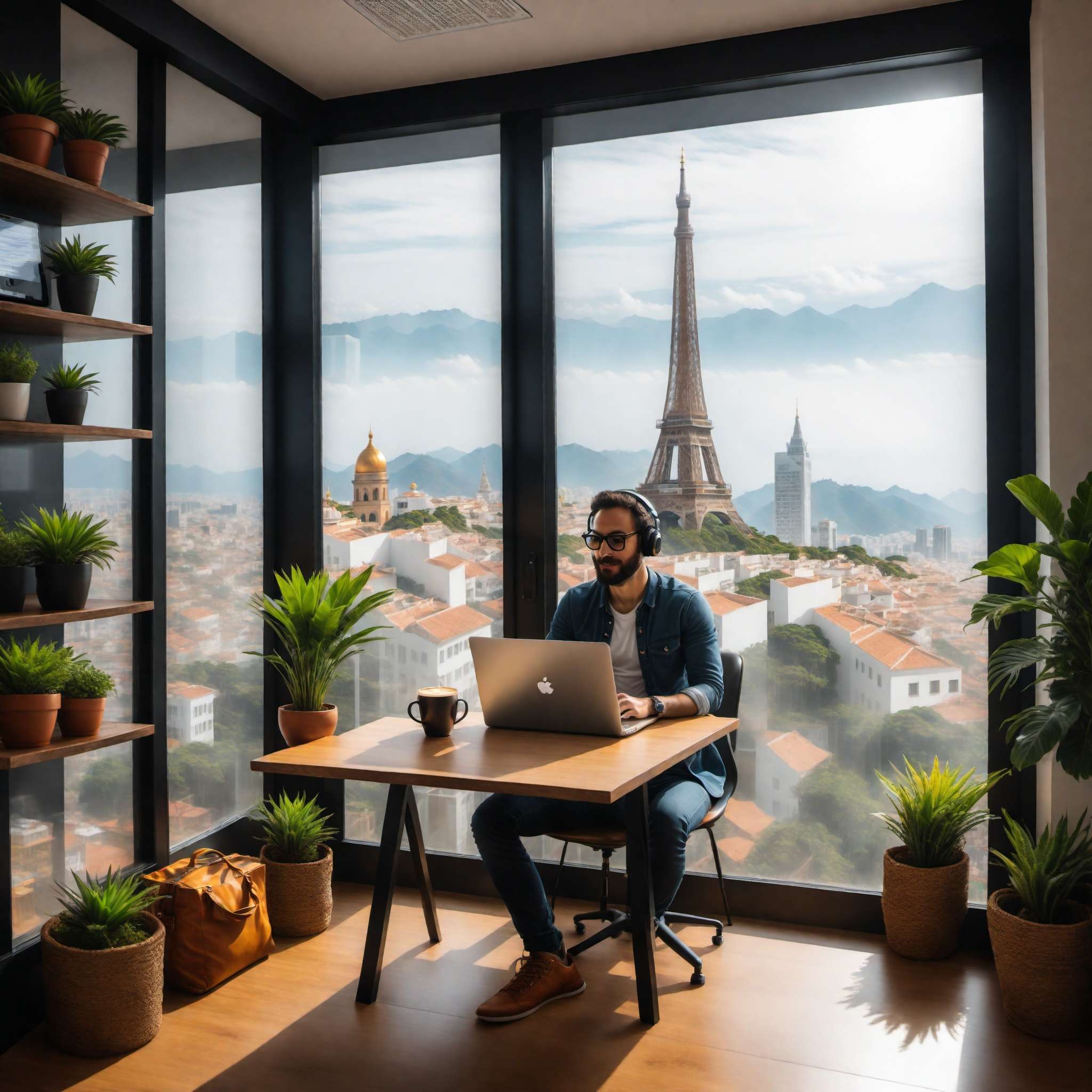
© Copyright , ZombieBunny.Org
Important tech tools for remote work
Being a successful digital nomad requires leveraging the right tech tools to ensure productivity and connectivity. These tools can range from hardware devices to software applications that facilitate remote work.
For hardware, besides your laptop, consider investing in a reliable smartphone, external hard drives for backup, and a good-quality pair of noise-cancelling headphones for those busy cafes or co-working spaces. A portable Wi-Fi router or a local SIM card with a generous data plan can ensure reliable internet connectivity, which is crucial for remote work.
Software tools are equally important. Communication and collaboration tools like Slack, Zoom, and Google Workspace (formerly G Suite) allow for seamless interaction with clients, colleagues, or team members. Project management tools like Trello, Asana, or Basecamp can help you stay organized and keep track of your projects and deadlines.
Cloud storage services like Google Drive or Dropbox offer a secure space to store, share, and access your files from anywhere. Moreover, time-tracking apps like Toggl or RescueTime can help you manage your time effectively.
Lastly, security should be a priority. A good VPN (Virtual Private Network) can protect your data when using public Wi-Fi, and password management tools like LastPass can help secure your online accounts.
As we delve deeper into this guide, we will discuss how to effectively use these tech tools and others to maximize your productivity as a digital nomad.
Time management strategies
Effective time management is a crucial skill for digital nomads. With the freedom to set your own schedule comes the responsibility to ensure that work is completed on time, even while navigating the distractions of travel.
One effective strategy is to establish a routine. Even though your location might change frequently, having a consistent daily or weekly schedule can provide structure and ensure productivity. Identify your most productive hours and dedicate those to your most challenging tasks.
Another strategy is to use a time management technique such as the Pomodoro Technique, which breaks your work into intervals separated by short breaks. This can help maintain focus, reduce fatigue, and increase productivity.
Leverage digital tools to help manage your time. Calendar apps can help schedule your days, while project management tools can keep track of tasks and deadlines. Time-tracking apps can provide insights into where your time is going, helping you to work more efficiently.
Managing time zones is another crucial aspect of time management for digital nomads, especially when working with clients or teams in different parts of the world. Tools like World Time Buddy can help you schedule meetings across different time zones.
When managing your time, remember to also allocate time for rest, exploration, and personal pursuits. Balance is key to a sustainable and enjoyable digital nomad lifestyle. As we progress in this guide, we’ll explore more strategies for effective time management.
Communication and collaboration in a remote setting
Effective communication and collaboration are key to success in a remote setting. As a digital nomad, you need to stay connected with your clients, colleagues, or team members, despite being in different geographical locations.
Digital tools play a significant role in facilitating communication and collaboration in a remote setting. Tools like Slack or Microsoft Teams offer platforms for instant messaging, file sharing, and team discussions. Video conferencing tools like Zoom or Google Meet enable face-to-face meetings, which are crucial for complex discussions, presentations, or team-building activities.
Collaboration tools like Google Workspace or Microsoft 365 allow multiple people to work on documents, spreadsheets, or presentations simultaneously. Project management tools like Trello or Asana can help manage tasks, track progress, and ensure everyone is aligned on project goals and deadlines.
While leveraging these tools, it’s also important to establish clear communication norms. This includes setting expectations around response times, using clear and concise language, and respecting boundaries and time zones.
Remember, effective communication isn’t just about staying updated on work; it’s also about building relationships. Regular check-ins, virtual team activities, or simply sharing personal updates can help build rapport and foster a sense of community in a remote setting.
As we explore further in this guide, we’ll delve into best practices for remote communication and collaboration, helping you navigate the challenges and maximize the benefits of remote work as a digital nomad.
Living the Nomadic Life: Accommodation Transportation and Living Costs
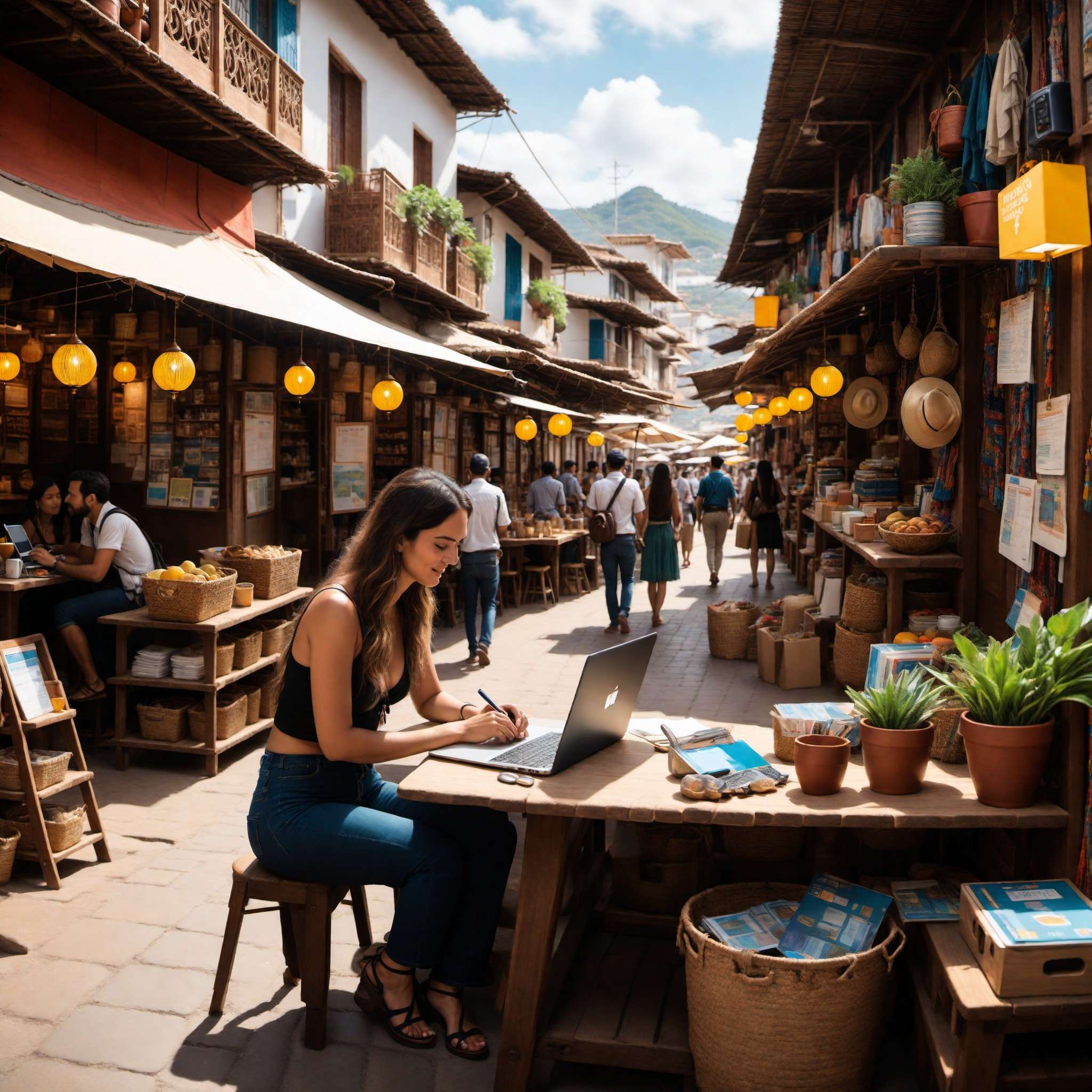
© Copyright , ZombieBunny.Org
Finding affordable accommodation
Finding affordable accommodation is a critical aspect of the digital nomad lifestyle. As your home away from home, your accommodation should not only fit within your budget but also offer a conducive environment for work and relaxation.
Several platforms cater specifically to digital nomads. Websites like Airbnb, Booking.com, and Agoda offer a range of options from private rooms to entire apartments or houses. For longer stays, consider platforms like Nomad Rental or Outsite, which offer long-term rentals in various cities worldwide.
Co-living spaces are also becoming popular among digital nomads. These spaces offer a blend of private and shared living, often including workspaces and communal areas. Co-living can be a great way to meet other digital nomads and enjoy a sense of community.
When selecting accommodation, consider factors beyond just cost. A reliable internet connection is a must for digital nomads. The location should be safe and ideally close to amenities like grocery stores, cafes, and public transport. If you plan to cook, ensure the place has a well-equipped kitchen.
Remember, booking in advance, staying longer in one place, or traveling in the off-peak season can often lead to better deals. As we delve deeper into this guide, we’ll explore more strategies and resources for finding affordable, comfortable, and convenient accommodation to support your digital nomad lifestyle.
Understanding local transportation
Understanding local transportation is an essential part of living the digital nomad lifestyle. Efficiently navigating your way around your chosen destination can save you time, money, and stress. It also allows you to explore the place more freely and comfortably.
Research the local transportation options before you arrive. These could include public transportation like buses, trams, subway systems, taxis, or ride-sharing services like Uber or Grab. Familiarize yourself with routes, schedules, fares, and payment methods.
In some cities, it might be more convenient or economical to rent a bike or scooter. In others, walking might be the best way to get around, especially if you’re staying in a centrally located area. Remember, each place is unique, and the best mode of transportation can vary.
Consider getting local transportation apps, which can provide real-time updates, maps, and fares. Google Maps is a versatile tool that offers public transportation, walking, and driving directions in most places worldwide.
When using any mode of transportation, it’s important to prioritize safety. This includes following local traffic rules, using reliable transportation services, and avoiding travel in less safe areas, especially at night.
As we continue through this guide, we’ll provide more tips and resources to help you navigate local transportation efficiently and safely, allowing you to enjoy your digital nomad journey to the fullest.
Managing living costs in different countries
Managing living costs is a crucial aspect of the digital nomad lifestyle, especially as these can vary greatly from country to country. Understanding and planning for these costs can help you maintain your budget and live comfortably wherever you choose to work and travel.
Accommodation is typically the biggest expense, so finding affordable options is key. As mentioned earlier, websites like Airbnb, Booking.com, and long-term rental platforms can help you find accommodations within your budget.
Food costs can also vary widely. Eating out in some countries can be quite affordable, while in others, cooking your own meals might be more economical. Local markets can be a great source of fresh, affordable produce.
Transportation costs can be managed by utilizing public transit or walking when possible. In cities where public transit is not as convenient or safe, you might need to budget for taxis or ride-sharing services.
Don’t forget to factor in costs like health insurance, travel insurance, and entertainment or sightseeing expenses. Also, be aware of currency exchange rates and bank fees for foreign transactions.
One strategy to manage living costs is to mix destinations with different cost of living. Spending time in more expensive countries can be balanced by spending time in countries where your money goes further.
Throughout this guide, we’ll provide more insights and tools to help you navigate and manage living costs effectively, ensuring a sustainable and enjoyable digital nomad lifestyle.
Staying Healthy and Safe: A Guide to Nomadic Well-being

© Copyright , ZombieBunny.Org
Maintaining physical health while traveling
Maintaining physical health while traveling is essential for digital nomads. The excitement of exploring new places and the demands of remote work can sometimes lead to neglecting one’s physical well-being. However, staying fit and healthy allows you to enjoy your adventures to the fullest and perform your best professionally.
Adopting a regular exercise routine is crucial. This doesn’t necessarily mean you need to find a gym in every city you visit. Walking or biking instead of using public transport, practicing yoga in your room, or trying out local outdoor activities like hiking or surfing can all contribute to your fitness.
Eating healthy can be a challenge while traveling, especially in places where fast food is more accessible than fresh produce. Try to maintain a balanced diet, cook your own meals when possible, and stay hydrated. Be adventurous but mindful when trying local cuisines.
Getting enough sleep is another important aspect of maintaining physical health. Despite the temptation to explore or work late into the night, ensure you get adequate rest. This not only keeps you energized but also helps with jet lag and adjustment to new time zones.
Remember to listen to your body. If you’re feeling unwell, take time to rest and seek medical attention if necessary. As we progress in this guide, we’ll share more tips on how to maintain your physical health while living the nomadic lifestyle.
Eating healthy on the road
Eating healthy on the road is an essential part of maintaining well-being as a digital nomad. While trying local cuisines is one of the joys of travel, it’s important to balance this with healthy choices to keep your body nourished and energized.
One strategy for healthy eating is cooking your own meals. Opt for accommodations with kitchen facilities and shop at local markets for fresh, local produce. This not only allows you to control what goes into your meals but also offers an authentic taste of local life.
When eating out, opt for meals that include lean proteins, fruits, vegetables, and whole grains. Even in fast-food restaurants, healthier options are often available. Stay hydrated by drinking plenty of water, and limit your intake of sugary drinks and alcohol.
Snacks can be a pitfall for many travelers. Instead of reaching for chips or chocolates, pack healthier alternatives like nuts, fruits, or yogurt.
Remember, moderation is key. It’s perfectly fine to indulge in local delicacies; just balance these with healthier choices. Also, be mindful of portion sizes, especially in countries where servings might be larger than what you’re used to.
Staying healthy while on the road is not just about physical health; it also contributes to mental well-being and work productivity. Throughout this guide, we’ll share more tips and resources to help you maintain a healthy diet while enjoying your nomadic lifestyle.
Ensuring personal safety in foreign countries
Ensuring personal safety in foreign countries is a top priority for digital nomads. Whether you’re in a bustling city or a tranquil beach town, being aware and prepared can significantly reduce risks and enhance your travel experience.
Before arriving in a new country, research about local customs, laws, and safety concerns. Understanding cultural norms can help you blend in and avoid unwanted attention. Stay updated with local news and weather forecasts to avoid areas with civil unrest or natural disasters.
In terms of personal belongings, keep your valuable items secure and avoid displaying expensive gadgets in public. Always have digital and physical copies of your important documents like passport, visas, and insurance.
When it comes to accommodation, choose a place in a safe neighborhood. Use reliable transportation services, especially at night, and be cautious while sharing your travel plans with strangers.
Maintain a healthy level of skepticism when dealing with overly friendly locals or fellow travelers. While most people are genuinely friendly and helpful, some might have malicious intentions.
Purchase a comprehensive travel insurance policy that covers theft, loss, accidents, health issues, and evacuation. Keep emergency numbers, like local police and your country’s embassy, readily available.
Remember, personal safety is largely about using common sense and staying cautious. As we delve deeper into this guide, we’ll provide more tips and resources to help you ensure your safety while enjoying the freedom of digital nomadism.
Building a Community: Networking and Socializing as a Digital Nomad
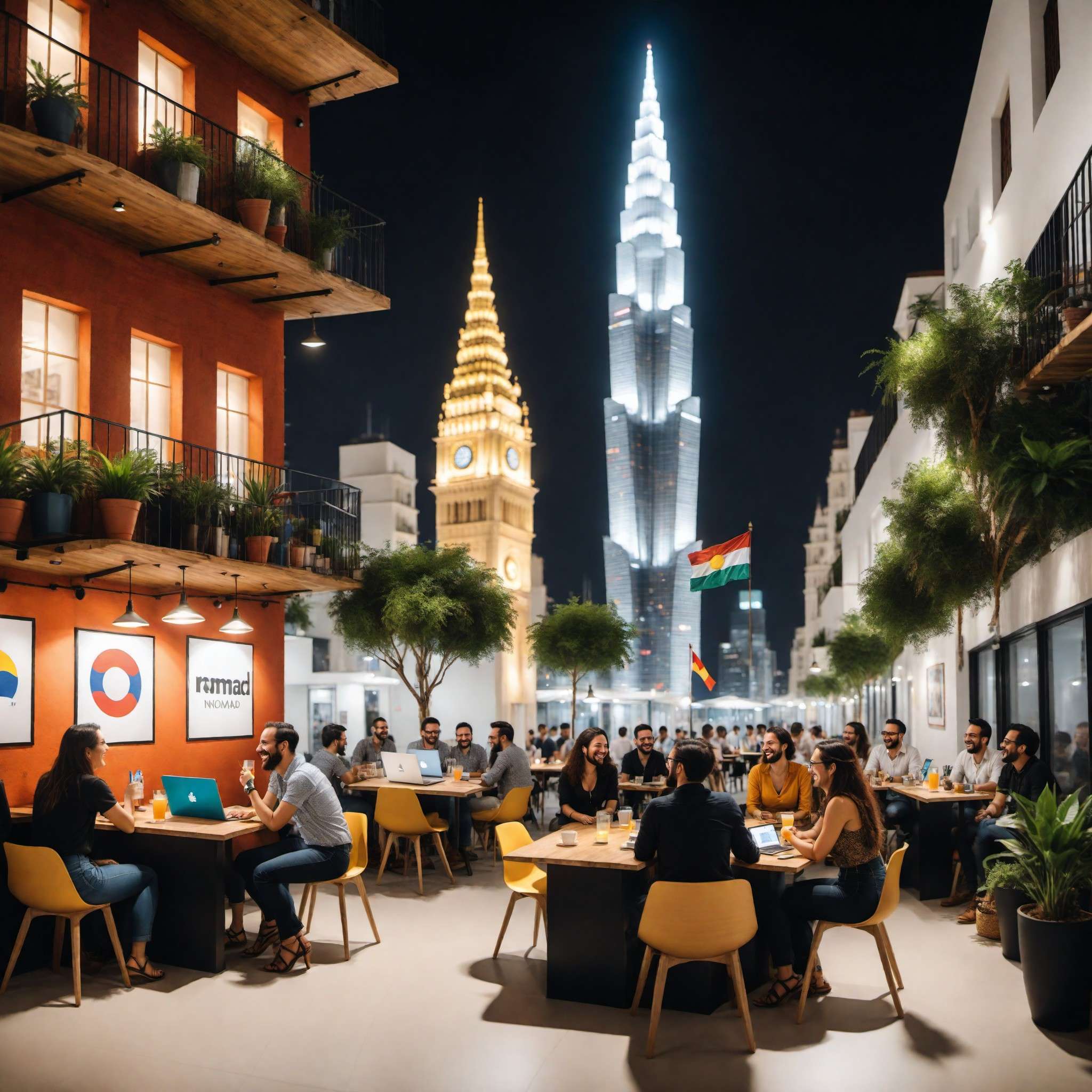
© Copyright , ZombieBunny.Org
Building a professional network while traveling
Building a professional network while traveling can be incredibly rewarding for digital nomads. Not only can it lead to work opportunities, but it can also provide a sense of community and support while on the road.
Digital platforms are a great place to start. LinkedIn is a powerful tool for professional networking, allowing you to connect with professionals in your field worldwide. Facebook groups and online forums for digital nomads can also be valuable platforms for sharing experiences, tips, and job opportunities.
Attending local networking events, meetups, and workshops is another effective way to build your network. Websites like Meetup or Eventbrite can help you find relevant events in your area.
Co-working spaces are not just about having a place to work; they’re also vibrant communities of like-minded professionals. Participating in co-working spaces can offer opportunities to collaborate, learn, and create professional relationships.
Don’t underestimate the value of casual encounters. You never know who you might meet while exploring a new city, chilling on a beach, or sharing a meal in a local restaurant.
Remember, networking is not just about taking; it’s about giving as well. Be ready to share your skills, knowledge, and experiences, and be supportive of others in your network.
As we progress in this guide, we’ll share more strategies and resources to help you build a strong professional network while traveling the world as a digital nomad.
Making friends in the digital nomad community
Making friends in the digital nomad community can enrich your nomadic journey with shared experiences, companionship, and mutual support. Whether you’re the sociable type or more introverted, there are plenty of ways to connect with like-minded individuals on the road.
Digital platforms can be a great starting point. Facebook groups, online forums, or apps designed for digital nomads provide platforms where you can share experiences, ask questions, and even plan meetups.
Attending events or meetups designed for digital nomads can also facilitate friendships. From casual get-togethers to organized events like conferences or retreats, these gatherings offer opportunities to meet people face-to-face and build meaningful connections.
Co-living and co-working spaces are also great places to meet fellow digital nomads. These spaces foster a sense of community, where you can work, socialize, and even travel together.
Remember, making friends isn’t about the quantity but the quality of connections. It’s about finding people who understand the ups and downs of the nomadic lifestyle, with whom you can share adventures, laughter, and mutual support.
Be open, be genuine, and be willing to step out of your comfort zone. As we delve deeper into this guide, we’ll share more tips and strategies on how to build friendships and cultivate a sense of community in the digital nomad lifestyle.
Overcoming loneliness and homesickness
Overcoming loneliness and homesickness is a common challenge for digital nomads. Despite the freedom and adventure, being away from familiar surroundings and loved ones can sometimes lead to feelings of isolation.
Building a network of friends, as mentioned earlier, can significantly help alleviate loneliness. Regular interactions, shared activities, or just having someone to talk to can make you feel more connected and less alone.
Leverage technology to stay connected with your family and friends back home. Regular video calls, social media updates, or even old-fashioned emails can help you maintain those important relationships and keep homesickness at bay.
Creating a routine can also provide a sense of stability and familiarity. This might include regular work hours, exercise, hobbies, or even a nightly call with a loved one.
Exploring your surroundings and immersing yourself in local culture can also help. The more you learn and engage with the place you’re in, the more it can start to feel like home.
Remember, it’s perfectly okay to feel lonely or homesick. Acknowledge these feelings, reach out to your support network, or seek professional help if needed.
In this guide, we will continue to explore strategies and resources on how to navigate these challenges and ensure your digital nomad journey is not just exciting and fulfilling, but also emotionally healthy.
Responsible Travel: Being a Respectful and Sustainable Digital Nomad

© Copyright , ZombieBunny.Org
Respecting local cultures and customs
Respecting local cultures and customs is a fundamental aspect of being a responsible digital nomad. By understanding and respecting the places you visit, you not only enrich your own travel experience but also contribute positively to the local communities.
Before you arrive in a new location, take the time to learn about local customs, traditions, and etiquette. This could involve understanding religious customs, dress codes, or local manners. For instance, in some cultures, it’s considered rude to refuse an offer of food, while in others, certain hand gestures might be offensive.
Learning a few basic phrases in the local language can also go a long way in showing respect and making connections. Simple words like “Hello,” “Thank you,” or “Please” can make your interactions more pleasant and meaningful.
Remember, as a digital nomad, you’re not just a tourist but a temporary resident. Show respect for local rules and laws, maintain cleanliness, and be mindful of noise levels, especially if you’re working from a public space.
Also, be aware of cultural appropriation, which involves adopting elements of a culture inappropriately or without proper understanding and respect. Always approach local cultures with humility, curiosity, and respect.
As we delve deeper into this guide, we’ll share more insights on how to be a respectful and responsible digital nomad, contributing positively to the places you visit and the people you meet.
Practicing sustainable travel
Practicing sustainable travel is an integral part of being a responsible digital nomad. As you traverse different countries and cultures, it’s important to minimize your environmental impact and contribute positively to the local communities.
One way to practice sustainable travel is by choosing eco-friendly accommodations. Many places now offer green options, like solar power, recycling programs, or initiatives to reduce water usage. You can also reduce your energy consumption by turning off lights and air conditioning when you leave your room.
Using public transportation, walking, or cycling whenever possible can significantly reduce your carbon footprint. If you need to fly, consider offsetting your carbon emissions through various programs available.
Support local economies by eating at local restaurants, shopping at local markets, and using local services. This not only provides economic benefits to the community but also gives you a more authentic experience.
Be mindful of your waste, especially plastic. Carry a reusable water bottle, avoid single-use plastics, and dispose of your waste responsibly. In some places, you might need to carry your trash with you until you find a proper disposal facility.
Remember, sustainable travel is not just about preserving the environment; it’s also about respecting local cultures, promoting economic equality, and ensuring the well-being of local communities. As we continue in this guide, we’ll provide more tips and resources to help you practice sustainable and responsible travel as a digital nomad.
Giving back to the local community
Giving back to the local community is a rewarding way to enhance your experience as a digital nomad. Beyond just enjoying the local attractions, actively contributing to the community can create meaningful connections and positive impacts.
One way to give back is through volunteering. Many organizations and initiatives welcome short-term volunteers in various fields, from teaching English to environmental conservation. Websites like Workaway or HelpX can connect you with these opportunities.
Shopping local is another simple yet effective way to give back. Supporting local businesses, artisans, and farmers not only contributes to the local economy but also promotes cultural heritage and sustainable practices.
If you have professional skills, consider offering them to local businesses or non-profits. This could be web design, social media marketing, business consulting, or any other skills that could benefit the community.
Consider donating to local charities or initiatives. Even a small donation can make a significant difference in some communities. However, ensure to research the organization and ensure that your donation will be used effectively.
Remember, giving back is not about self-promotion or guilt alleviation; it’s about making a genuine and respectful contribution to the places that you call your temporary home. As we delve deeper into this guide, we’ll explore more ways to give back and enrich your journey as a digital nomad.
Conclusion: Are You Ready to Unleash Your Freedom?
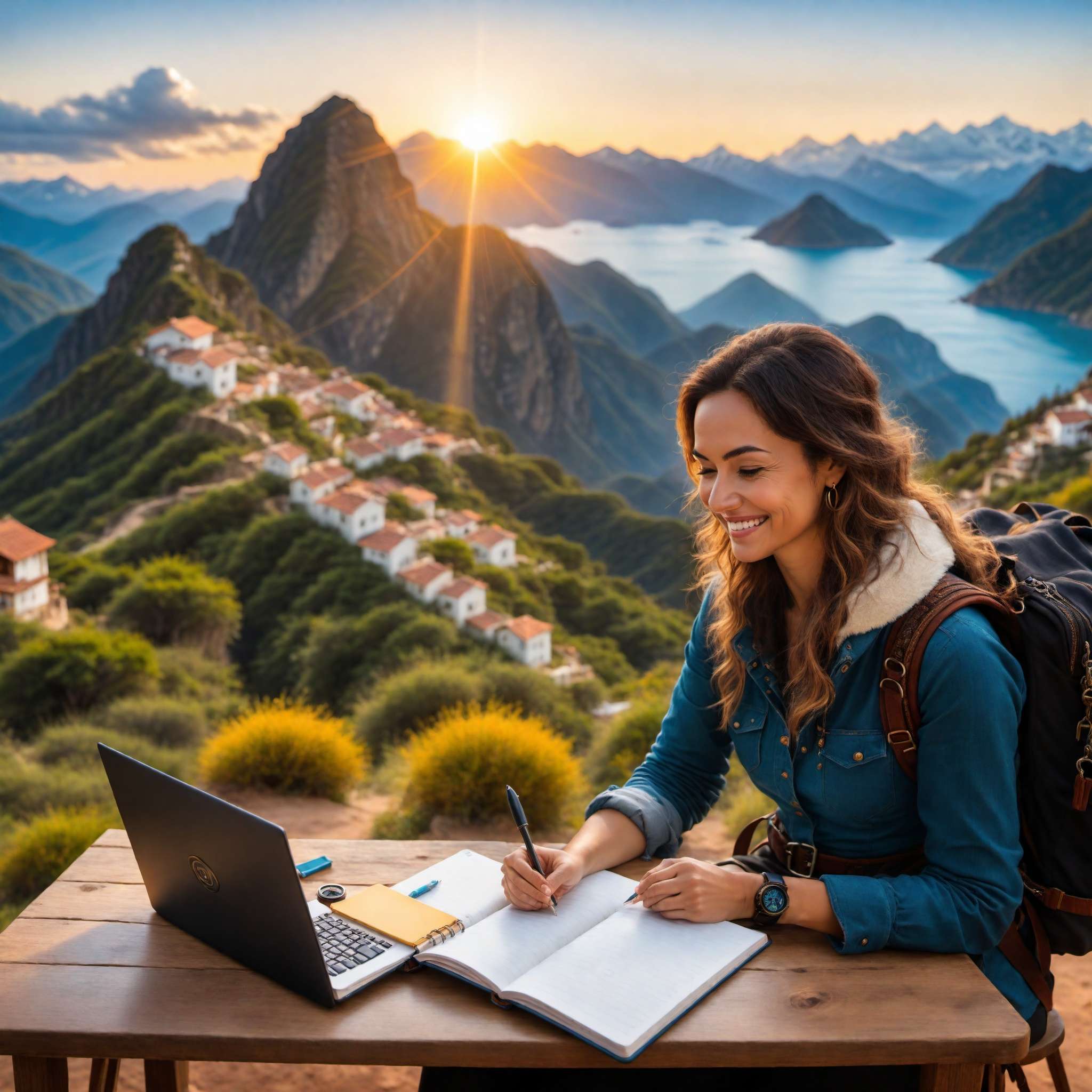
© Copyright , ZombieBunny.Org
Recap of the ultimate guide to digital nomadism
In our ultimate guide to digital nomadism, we’ve taken you through the journey of unleashing your freedom, exploring every facet of this exciting lifestyle. From understanding the concept of digital nomadism, setting up as a digital nomad, mastering remote work, managing living expenses, maintaining health and safety, building a community, to traveling responsibly, we’ve covered it all.
We’ve delved into the practical aspects of digital nomadism, such as finding remote work, managing time, understanding local transportation, finding affordable accommodation, and managing living costs. These practicalities are the foundation for a successful and sustainable digital nomad lifestyle.
We’ve also discussed the importance of maintaining physical health, eating healthy on the road, and ensuring personal safety. We touched on building a professional network while traveling, making friends in the digital nomad community, and overcoming loneliness and homesickness.
In our focus on responsible travel, we’ve highlighted the importance of respecting local cultures and customs, practicing sustainable travel, and giving back to the local community. Embracing these aspects ensures that digital nomads contribute positively to their temporary homes.
As we wrap up this guide, remember that digital nomadism is more than just traveling and working; it’s a lifestyle choice that offers freedom, adventure, and personal growth. With the insights from this guide, we hope you are now ready to embark on your journey, embrace the challenges, and enjoy the rewards that come with being a digital nomad.
Finding personal freedom in digital nomadism
Finding personal freedom is at the very heart of the digital nomad lifestyle. It’s about breaking free from the confines of a traditional office, exploring different corners of the world, and discovering new cultures, cuisines, and friendships along the way. More importantly, it’s about finding a work-life balance that aligns with your values, interests, and aspirations.
In this guide, we’ve shown how digital nomadism enables you to work from anywhere, be it a beach in Bali, a cafe in Paris, or a co-working space in New York. You have the freedom to choose your work hours, enabling you to seize the day and enjoy the local attractions or indulge in your hobbies.
We’ve also touched on how digital nomadism fosters personal growth. The challenges of living and working in a foreign place, navigating different cultures, and building a network in new places can enhance your resilience, adaptability, and cultural sensitivity. These are not just valuable life skills but also desirable professional skills in today’s globalized world.
However, with freedom comes responsibility. Whether it’s meeting work deadlines, ensuring personal safety, or respecting local cultures, successful digital nomadism requires responsibility and commitment.
As we conclude this guide, we invite you to reflect on the possibilities and challenges of digital nomadism. If you’re ready to embrace this lifestyle, then get ready to unleash your freedom and embark on an unforgettable journey of work, travel, and self-discovery.
Taking the first step towards your nomadic dream
Taking the first step towards your nomadic dream can be both exciting and nerve-wracking. It’s a leap of faith into a lifestyle that promises adventure, freedom, and personal growth. This guide has equipped you with the knowledge, tips, and resources to embark on this journey, but the first step is ultimately up to you.
Start by setting clear and realistic goals for your digital nomad journey. What do you hope to achieve? Where do you want to travel? What type of work will you do? Having clear answers to these questions can guide your planning and decision-making.
Next, assess your financial situation. Ensure you have a steady income source, an emergency fund, and a budget for your travels. This financial planning is critical to sustaining your digital nomad lifestyle and avoiding unnecessary stress.
Prepare yourself for the challenges that come with this lifestyle. From finding reliable Wi-Fi, managing different time zones, ensuring personal safety, to overcoming loneliness, being prepared will help you navigate these challenges more effectively.
Lastly, embrace the unknown with an open mind and a resilient spirit. Be ready to experience new cultures, meet new people, and adapt to different ways of living and working.
Remember, every journey starts with a single step. As you conclude this guide, consider this your invitation to take that first step towards unleashing your freedom and embracing the digital nomad lifestyle.
Please support our site and purchase something from our store.






